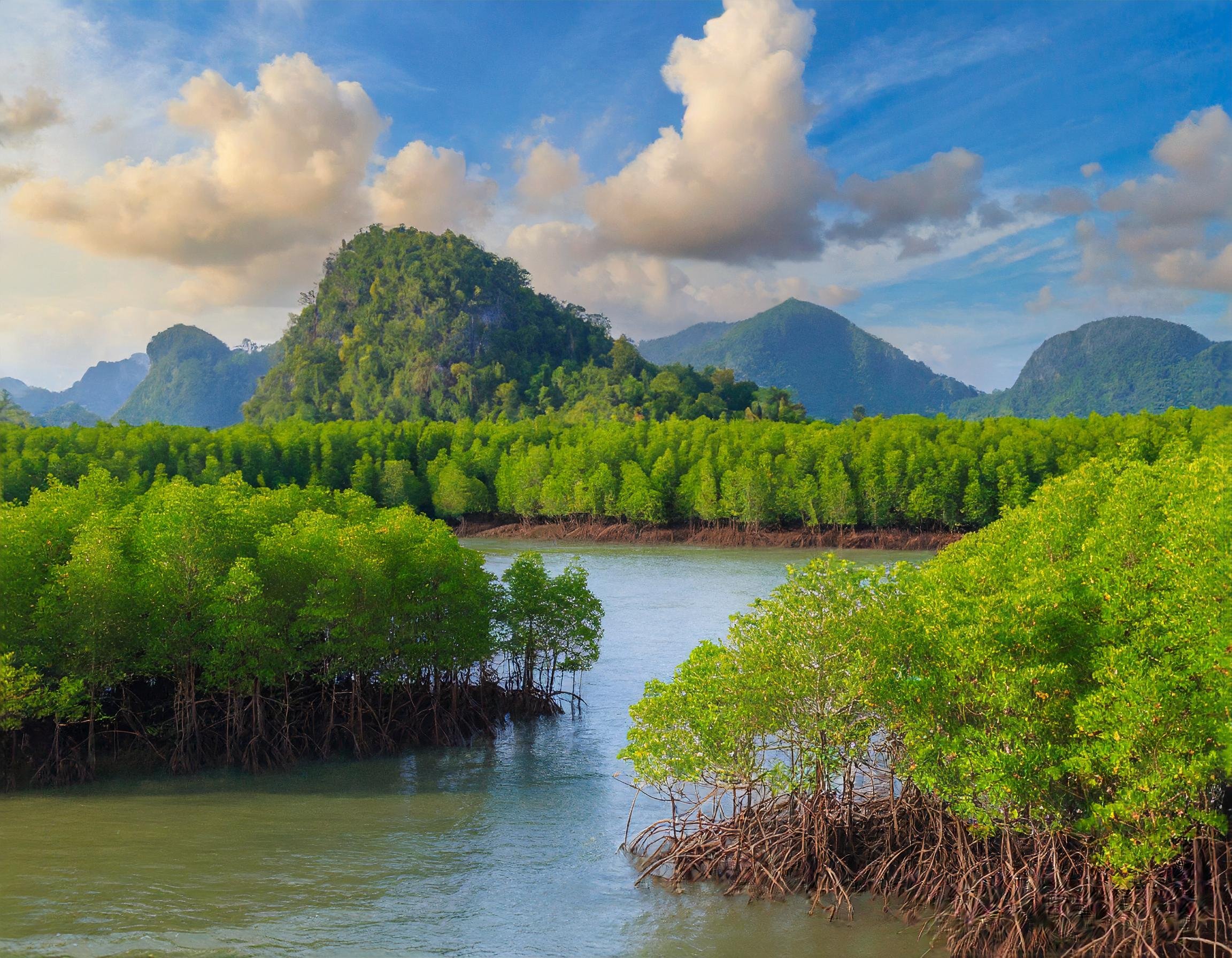Delving into Nature's Vital Statistics: A Comprehensive Exploration of Mangroves
In the expansive tapestry of Earth's ecosystems, mangroves often go unnoticed, concealing a realm of beauty and unparalleled benefits. The recent findings presented by the United Nations Environment Programme offer a profound look into the significance of these coastal wonders. Let's dissect the key insights derived from this enlightening examination.
Unveiling the Enigma of Mangroves
Situated at the juncture of land and sea, mangroves play a pivotal role in the intricate dance of our planet's ecological systems. A recent investigation by UNESCO peels back the layers, unraveling the vital statistics that transform mangroves from mere coastal features into indispensable contributors to global well-being.Revelations about Mangrove Forests: Nature's Crucial Statistics
Global Distribution (2020): The total global mangrove forest area is estimated at 147,359 km2. Asia-Pacific dominates with 51%, followed by the Americas (29%) and Africa (20%). Indonesia leads globally with 20%, trailed by Brazil, Australia, Mexico, and Nigeria, collectively hosting nearly half of the world's mangroves.Net Loss Over 24 Years (1996-2020): There's a net loss of 5,245 km2 (3.4%) of mangrove forest. The greatest losses occur in Asia-Pacific, Americas, and Africa, notably in Indonesia, Australia, Mexico, and Myanmar. Recent years indicate stabilization in global mangrove loss, with gains observed in major rivers, estuaries, and deltas.Biodiversity Impact: Mangroves house 1,533 species, 15% of which are threatened with extinction. Various threat levels exist, affecting 50% of mangrove-associated mammals, 22% of fishes, 16% of plants, 13% of amphibians, and 8% of bird and reptile species. The situation worsens for 89% of already at-risk species.Climate Change and Carbon Storage: Mangroves are vital for climate change mitigation, sequestering carbon. There's an overall reduction of 139 Mega tonnes of carbon stocks between 1996 and 2020. The most significant changes are anticipated in Asia-Pacific, Americas, and Africa.Economic Significance: Crucial for small-scale fishers in West and Central Africa, South Asia, and South and Central America. Mangrove-associated fisheries support a significant percentage of fishers in countries like Guinea-Bissau, Guinea, Nigeria, and Gabon.Challenges and Opportunities: There's an urgent need to reverse human impacts and proactively restore lost and degraded mangrove areas. Restoration success varies and requires scientific evidence, best practices, and local knowledge. Integrating gender equality is crucial for successful and sustainable mangrove conservation and restoration initiatives.Long-Term Considerations: Positive signs of mangrove recovery exist, but restoration should prioritize natural recovery over artificial methods where possible. Effective restoration may take decades, with outcomes differing from the original forest. Securing long-term funding and engaging local communities, including marginalized groups, is crucial for project success.
A Plea for Appreciation and Preservation
In conclusion, the UNESCO article offers a captivating glimpse into the intrinsic beauty and invaluable benefits of mangroves. From supporting biodiversity to contributing to climate change mitigation, mangroves emerge as unsung heroes of our planet. The call to action is clear: appreciate, protect, and actively participate in preserving these coastal wonders for the well-being of the Earth and its inhabitants. The legacy of human impacts on mangroves can be reversed, and with proactive restoration, we can ensure the thriving continuity of these vital ecosystems for generations to come.Source: United Nations Environment Programme (2023). Decades of mangrove forest change: what does it mean for nature, people and the climate? UNEP, Nairobi ISBN: 978-92-807-4019-6 editor-in-chief: Chris Mcowen (UNEP-WCMC) authors: Chris Mcowen (Lead Author, UNEP-WCMC), Pete Bunting (Aberystwyth University), Gabriel Grimsditch (UNEP), Lammert Hillarides (Wetlands International), Richard Lucas (Aberystwyth University), Daniel Richards (Manaaki Whenua, Landcare research), Ake Rosenqvist (soloEO/JAXA), Rachael Scrimgeour (UNEP-WCMC) and Tom Worthington (University of Cambridge).
